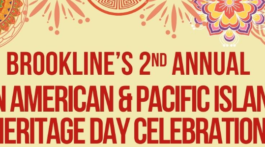While college students everywhere are gearing up for spring break—that often hedonistic week of beach parties and binge drinking taking place in tropical locales like Florida and Mexico—a growing population of older Americans will also be abusing alcohol and prescription drugs. Their intoxicated hi-jinks won’t be caught on camera and aired on MTV—they’ll be behind closed doors in their homes, in medical settings, and in retirement communities, where boredom is often the reason people give for why they drink.
Speaking at Brookline High School on March 5th as part of the discussion “Drinking, Drugs, & Rock ‘n Roll: Substance Abuse by Older Adults and Boomers in a New Old Age,” Eric Hardt, M.D. of Boston Medical Center told a story of an elderly patient who was being given over-the-counter medication to treat the normal aches and pains that come with aging.
“She asked me if I was going to give her Percocet. She didn’t need it, but she wanted it because she said it made her happy!” Dr. Hardt recalled ruefully.
Part of the problem can be traced to a more laid-back attitude toward drugs and alcohol among boomers, many of whom as teenagers and young adults rebelled against their parents’ conservative attitudes by experimenting with controlled substances. With age and experience many of these boomers eventually sobered up, but others—typically heavy users—continued to abuse alcohol and drugs throughout the next decades, while others started drinking again later in life, after a catastrophic event like the loss of a spouse, child, job, illness or accident.
Prescription drug abuse is a leading cause of Emergency Room visits among those 50 years of age or older. In 2004, an estimated 115, 803 people went to the ER because of misuse of prescriptions (often opioids like Oxycodone.) In 2008 that number rose 121%, to 256, 097. Older adults sometimes practice ‘doctor-shopping’, with more than 30% of Medicare beneficiaries filling multiple opioid prescriptions from 2-4 healthcare providers.
When it comes to alcohol and drug abuse among the older population, one of the medical community’s chief concerns is accelerated mortality. For example, older people who binge drink are twice as likely to be dead in ten years compared to non-binge drinkers of the same age. Binge drinking among older adults is defined as 4 or more standard drinks for men over 65 and 3 or more drinks in women over 65. For those under age 65, binge drinking is defined as 5 or more drinks for men and 4 or more for women.
In addition to the risk of an earlier death, older drinkers’ bodies are less tolerant of the effects of alcohol and they aren’t able to bounce back from a drinking episode as quickly as a younger person. The impact alcohol has on an older person’s body is associated with an increased vulnerability to medical complications, hypertension, metabolic abnormalities, Cardiac arrhythmia, serious vitamin deficiencies, an increased risk of falls and fractures—which in an older adult can have more serious consequences than just a broken bone—and Aspiration Pneumonia.
Because boredom is a common cause of drinking among the elderly, Dr. Hardt and co-presenter, Carol Girard of the Massachusetts Department of Public Health Bureau of Substance Abuse Services, both advocated involving family members in treatment and replacing drugs and alcohol with social activities that ease isolation and restore self-esteem.
For more information, visit the MA Department of Health BSAS (Bureau of Substance Abuse Services) online at www.Helpline-online.com or call toll-free 1-800-327-5050.
Jennifer Campaniolo








